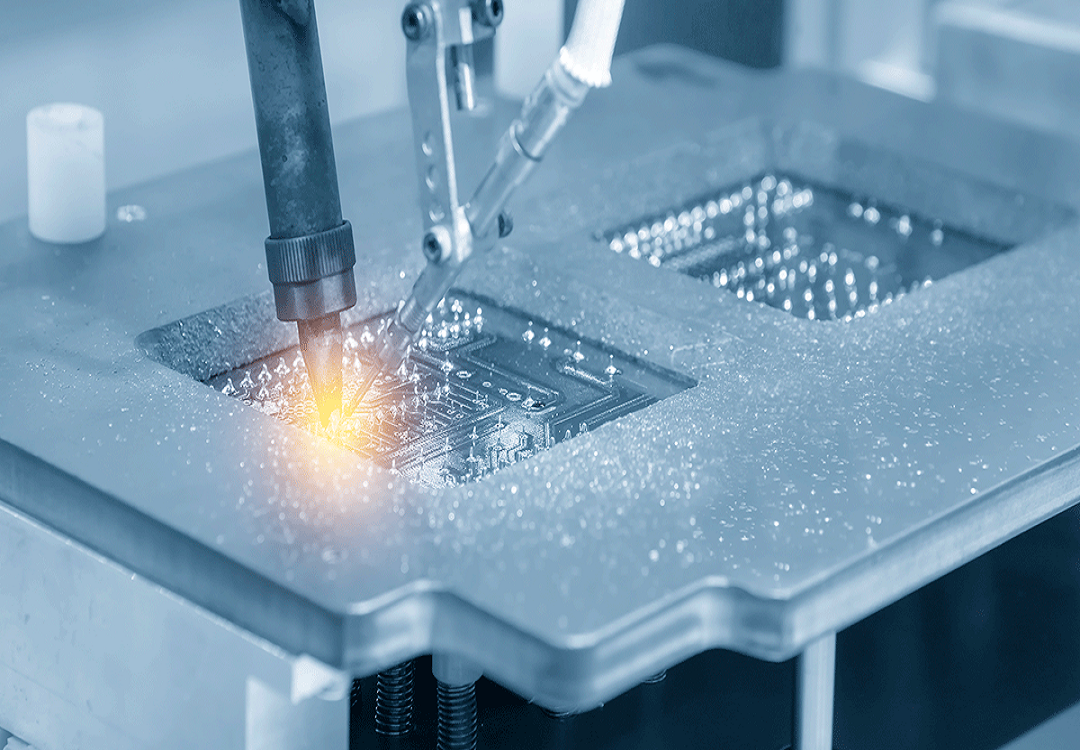India's Semiconductor Sector Leads Innovation in Electronics: Patent filing trend

The Indian Patent Office has reported a significant increase in semiconductor patent applications, with electronic-related patents accounting for 107 of the total. This indicates the importance of electronics in the semiconductor industry, with 96 of the 138 published patent applications being national-phase PCT applications. Major companies such as Qualcomm Incorporated, Fujifilm, Mitsubishi Electric Corporation, Huawei Technologies Ltd., Semco Smartech France, and Hitachi Energy Switzerland submitted these applications.
The dynamic nature of the semiconductor industry, ongoing advancements in electronics, and the demand for high-performance electronics are what are driving the growth in semiconductor electronics patents. Major causes of this growth include the use of 3D wafer bonding techniques to stack chips, hybrid connections between wafers, heterogeneous integration, and the increasing heterogeneity of SoCs.
Electronic advancements will continue to impact various sectors, including digital twins, power electronics, smart grids, and the Internet of Things (IoT). IoT can improve operational efficiency, provide better decision-making, and help businesses understand their customers. It has numerous applications in consumer electronics, healthcare, and the military, with wearable technology providing precise and up-to-date information on activities.
Smart grid technologies provide real-time energy information and control over energy costs. These technologies include on-load tap chargers, sophisticated protection relays, smart meters, and smart substations. They aim to lower carbon emissions, enhance power quality, limit blackouts, and offer more capacity to the electric system. Self-healing technology is also integrated into smart grids, enabling utilities to identify and fix issues automatically.
The demand for smarter grids is expected to increase with the growing need for green energy. Utility companies can use data to determine when to turn on and off electricity supplies, and they can use artificial intelligence to make forecasts.
Digital twin technology links digital data and physical assets, enabling businesses to optimize operations and guarantee system performance. This technology is used in various industries, such as engineering, manufacturing, architecture, and construction. Advanced digital twins can be set up in the cloud or on-site, leading to fewer false negatives and better root cause monitoring. Analytical tools like artificial intelligence and machine learning automate operations, allowing for better decision-making and reduced prototype iterations.
Smartwatches with sensors are becoming more common, providing real-time health and fitness information and alerting users of potential issues. These devices can monitor various health parameters, use voice commands, and set timers. Some smartwatches are waterproof, LTE-capable, and offer features like GPS tracking and notifications. High-end watches also feature GPS tracking and notifications, allowing users to save music from streaming services.
Power electronics devices convert electricity from one source to another and are used in sectors like consumer electronics, autos, clean energy, and railroads. The global power electronics market is predicted to grow at a 3.1% CAGR from 2022 to 2028. Power electronics companies will showcase their latest developments at CES, including intelligent edge systems, 5G/6G infrastructure, and smart power storage. The rollout of 5G networks worldwide has prompted increased innovation in semiconductor electronics. Patents related to 5G infrastructure, communication protocols, and devices compatible with 5G networks are in high demand.
The automotive industry's increasing reliance on electronic systems, including advanced driver assistance systems (ADAS), autonomous vehicles, and in-car entertainment, has fueled the growth of semiconductor electronics patents.
Semiconductors play a crucial role in various healthcare applications, from medical imaging devices to wearable health monitoring devices. Innovations in these areas contribute to the growth of patents in semiconductor electronics.
There is a growing emphasis on developing energy-efficient and environmentally friendly electronic devices. Patents related to power management, energy harvesting, and sustainable semiconductor materials are on the rise.
The semiconductor industry is highly competitive, and companies often engage in global collaborations. The need to stay ahead in the global market and collaborate with international partners contributes to increased patent activity.
Government initiatives supporting research and development, innovation, and the semiconductor industry can drive patent growth. Incentives such as tax breaks and grants encourage companies to invest in and protect their intellectual property.
In a variety of electronic industries, Einfolge’s IP specialists can advise and support clients. Utilizing years of expertise, thought leadership, advanced education, and decades of real-world engineering and business experience, we build the abilities required to assist clients in achieving their objectives in a range of electronics industries, such as:
- Circuits that are both digital and analog
- The architecture and systems of computers
- Encryption, compression, and coding
- storing data
- Automated electronic design
- Flexible electrical devices
- Graphics Processing Unit Architecture and Applications
- Integrated circuits
- Web applications and online shopping
- Lighting: solid-state and plasma
- Memory circuits, systems, and technologies
- Applications and manufacturing of MEMS
- Computing and communication on the go
- Nanotechnologies, quantum-effect devices, and materials engineering
- Interactions and associations
- Picture and optoelectronics
- Communications using RF and near-field
- Structures, procedures, tools, lithography, and manufacturing apparatus for semiconductor programs
- Three-dimensional printing
- There are two distinct approaches that can be applied to electrical inventions: offensive and defensive patenting.